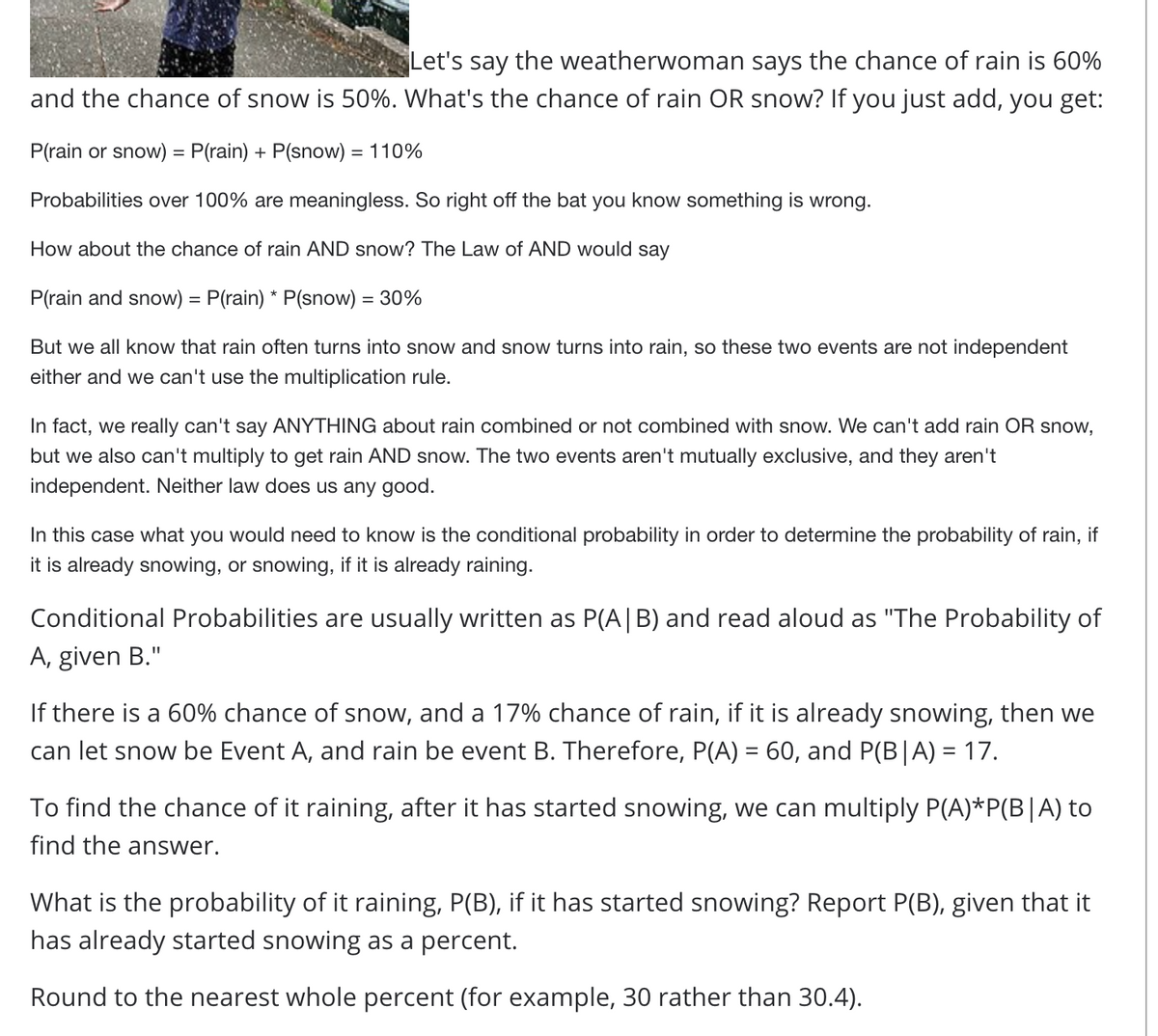What is the probability of it raining, P(B), if it has started snowing? Report P(B), given that it has already started snowing as a percent.
What is the probability of it raining, P(B), if it has started snowing? Report P(B), given that it has already started snowing as a percent.
Chapter8: Sequences, Series,and Probability
Section8.7: Probability
Problem 3ECP: You toss two six-sided dice. What is the probability that the total of the two dice is 5?
Related questions
Question
5

Transcribed Image Text:Let's say the weatherwoman says the chance of rain is 60%
and the chance of snow is 50%. What's the chance of rain OR snow? If you just add, you get:
P(rain or snow) = P(rain) + P(snow) = 110%
Probabilities over 100% are meaningless. So right off the bat you know something is wrong.
How about the chance of rain AND snow? The Law of AND would say
P(rain and snow) = P(rain) * P(snow) = 30%
But we all know that rain often turns into snow and snow turns into rain, so these two events are not independent
either and we can't use the multiplication rule.
In fact, we really can't say ANYTHING about rain combined or not combined with snow. We can't add rain OR snow,
but we also can't multiply to get rain AND snow. The two events aren't mutually exclusive, and they aren't
independent. Neither law does us any good.
In this case what you would need to know is the conditional probability in order to determine the probability of rain, if
it is already snowing, or snowing, if it is already raining.
Conditional Probabilities are usually written as P(A|B) and read aloud as "The Probability of
A, given B."
If there is a 60% chance of snow, and a 17% chance of rain, if it is already snowing, then we
can let snow be Event A, and rain be event B. Therefore, P(A) = 60, and P(B|A) = 17.
%3D
To find the chance of it raining, after it has started snowing, we can multiply P(A)*P(B|A) to
find the answer.
What is the probability of it raining, P(B), if it has started snowing? Report P(B), given that it
has already started snowing as a percent.
Round to the nearest whole percent (for example, 30 rather than 30.4).
Expert Solution
This question has been solved!
Explore an expertly crafted, step-by-step solution for a thorough understanding of key concepts.
This is a popular solution!
Trending now
This is a popular solution!
Step by step
Solved in 2 steps

Recommended textbooks for you

